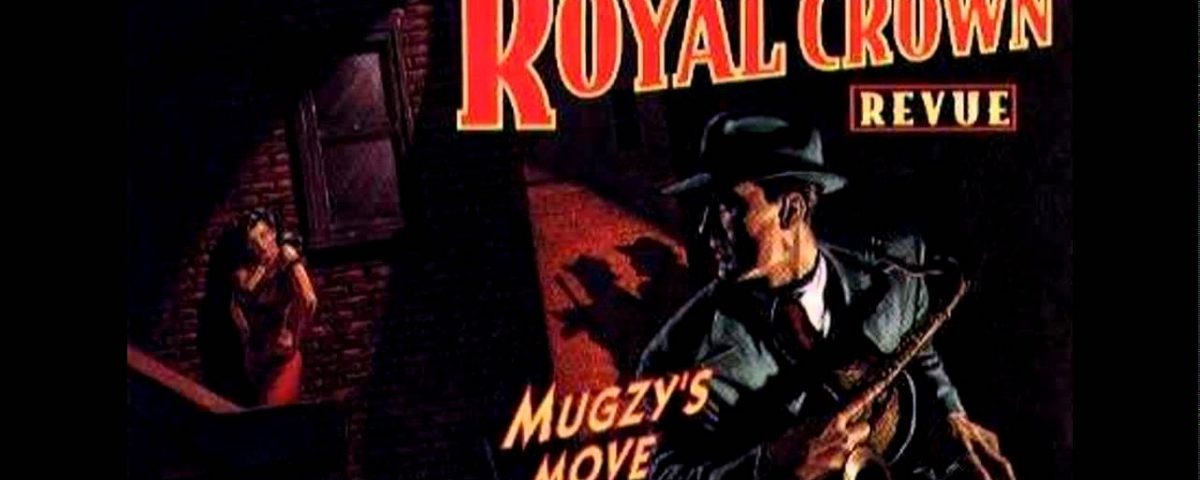Part Two of “The Swing Era” on Know Your Onions!
You’ll remember that in Part One we talked about the swing era as the time when across the US, swing music was the most popular music around. We know that both swing music and swing dances started to fade into the background after the end of World War II, and we know that both music and dancing came back later, because most of us reading this love to spend a Saturday night swinging out at The Hop not only to old swing songs, but also to new tunes from modern bandleaders like Glenn Crytzer, Jonathan Stout and Gordon Webster—but how did we get here?
***********************************************************************
By the 1980’s, almost no young people were listening to swing jazz. It had been 30 years since the swing era, and the music just wasn’t cool anymore. The only exception were a few very small groups of dance enthusiasts in Sweden, England, and the US who were amazed by the dancing they saw in movie clips like Hellzapoppin’ and Day at the Races, and were trying to re-create those old moves. They managed to find old-timer Al Minns and later Frankie Manning to teach them, and it’s thanks to them that we can learn Lindy Hop at dance workshops today, but….these people deserve their own post!
The fact is, although a few young people were rediscovering Lindy Hop (and there were still groups of old-timers doing dances like Balboa and Carolina shag) there still wasn’t much live music to dance to. Swing music was dead—but maybe not for long? In Los Angeles, California, bands like the George Gee Orchestra and Royal Crown Revue were playing swing and swing-inspired material locally. George Gee is a band leader who grew up with a love of the original swing music, but the members of Royal Crown Review on the other hand, had their roots in rockabilly, punk, and ska, and it’s this kind of neoswing band that started to become more and more popular through the 1990s.
Here, as a DJ I want to mention that if you talk to any swing DJ today, most of them will tell you that they usually avoid playing neoswing from this era. It’s fallen out of trend for dancers in general (again, another post…) but the point here is that these bands were popular, and they started a short-lived but nationwide musical craze that helped the swing dance community to grow and get to where it is today.
1989, the same year that Royal Crown Revue began playing together, Club Deluxe opened in San Francisco. It was the first swing dance venue of the swing revival, and four years later in 1993 the Derby club opened down in L.A., giving swing dance lessons and hosting live neoswing bands. Also in 1993, the movie Swing Kids (featuring a young Christian Bale) helped reintroduce swing dancing to mainstream America. It only ranked 138th at the box office that year, far behind the original Jurassic Park, but still pretty good for a period piece about swing dancers in Nazi Germany!
Neoswing’s popularity slowly grew until its peak in 1998. The Squirrel Nut Zipper’s album “Hot”, has gone platinum the year before, and in 1998 three different neoswing acts were in the Billboard top 50: Royal Crown Review, Big Bad Voodoo Daddies, and Cherry Poppin’ Daddies. That was also the year of the now-famous Gap commercial, showing people swing dancing with arials (but not one swing out…) to Louis Prima’s swing-era version of Jump, Jive & Wail. If you haven’t seen it, it’s definitely worth a watch here:
At this point maybe every teenager in America had seen swing dancing somewhere, and while it may not have been mainstream, it was popular enough for there to be swing dancing classes and dances in every major city again. Let’s face it: swing will never be as popular again as it was back in the 1930’s—that’s not how culture works. On the other hand, as a subculture, the swing “revival” era has now lasted longer than the original swing era! And when you look at the new swing dance communities popping up in cities across China, and in places like Dubai and Mozambique, it seems that the love of swing is still spreading around the world.
***********************************************************************
Article by Mathieu Vaughan



